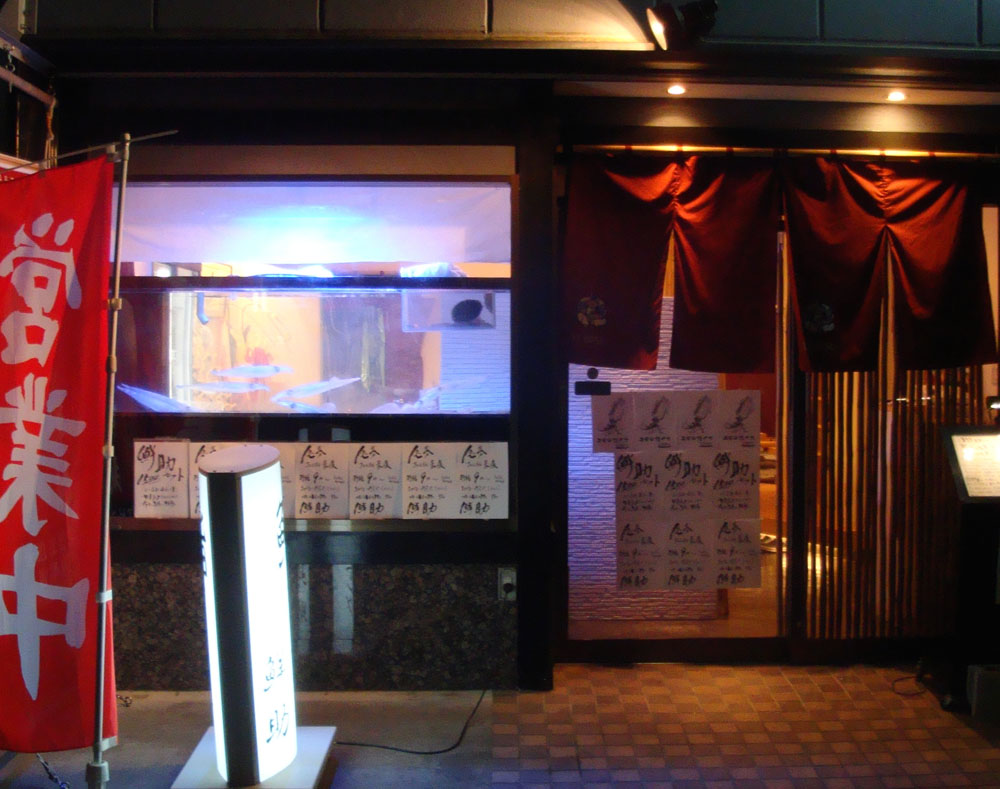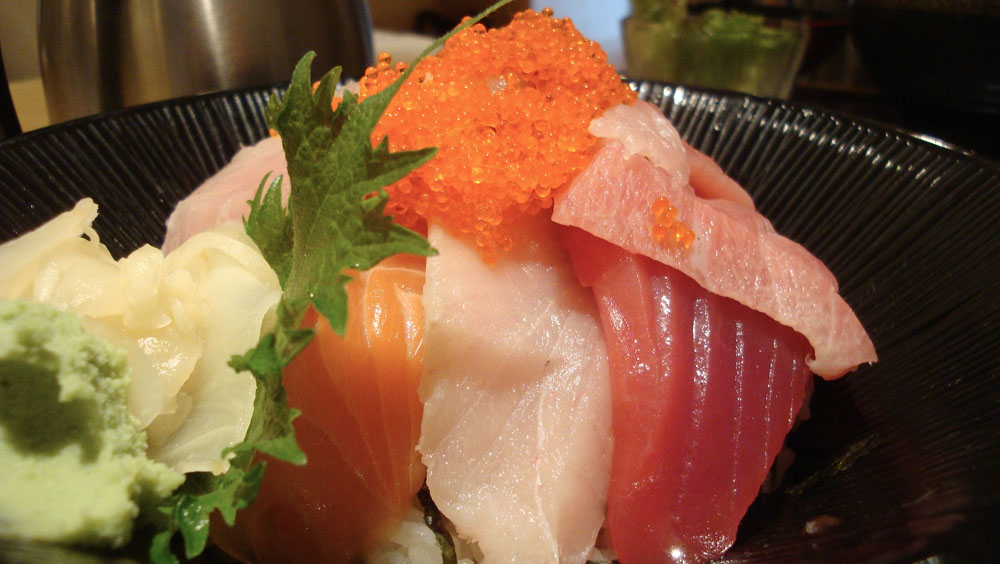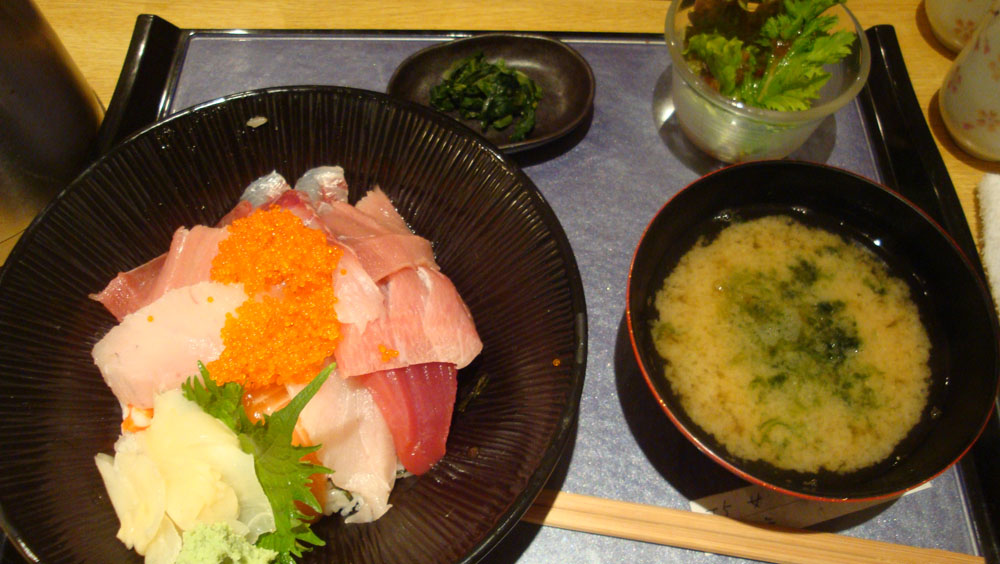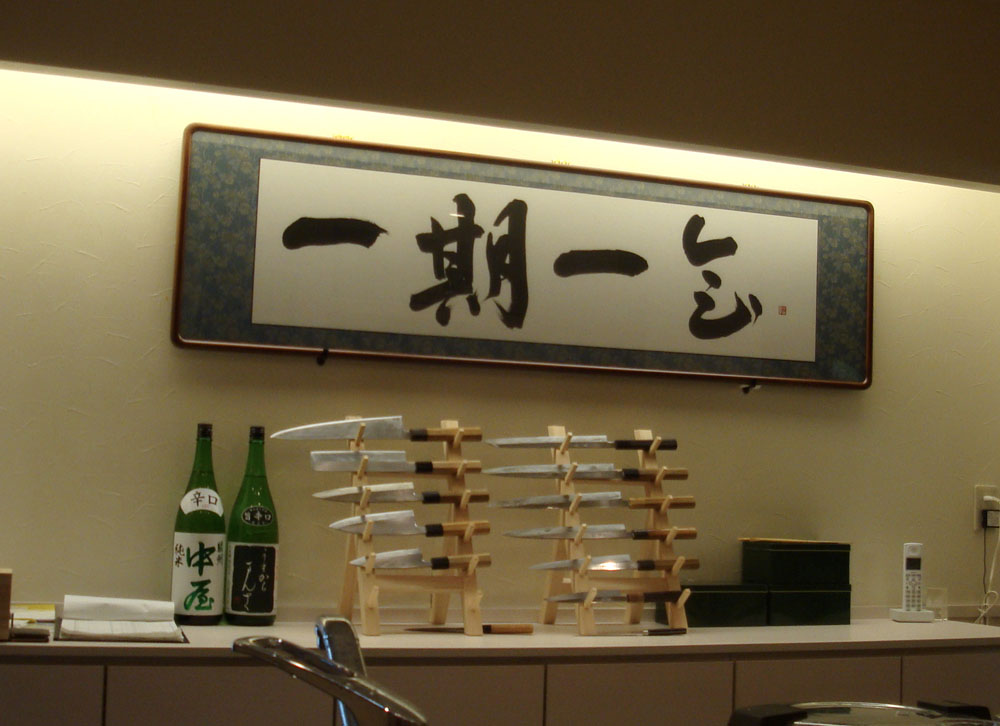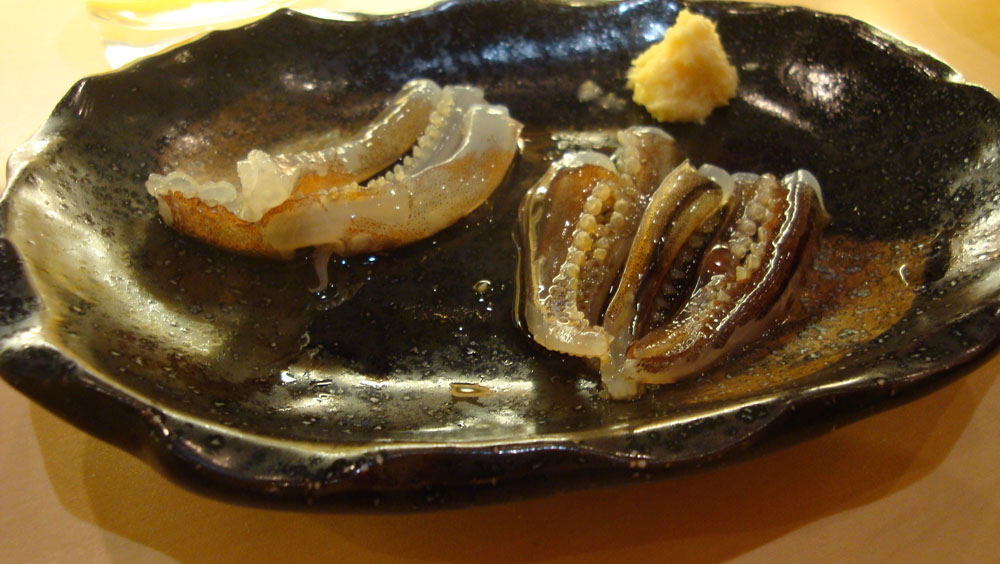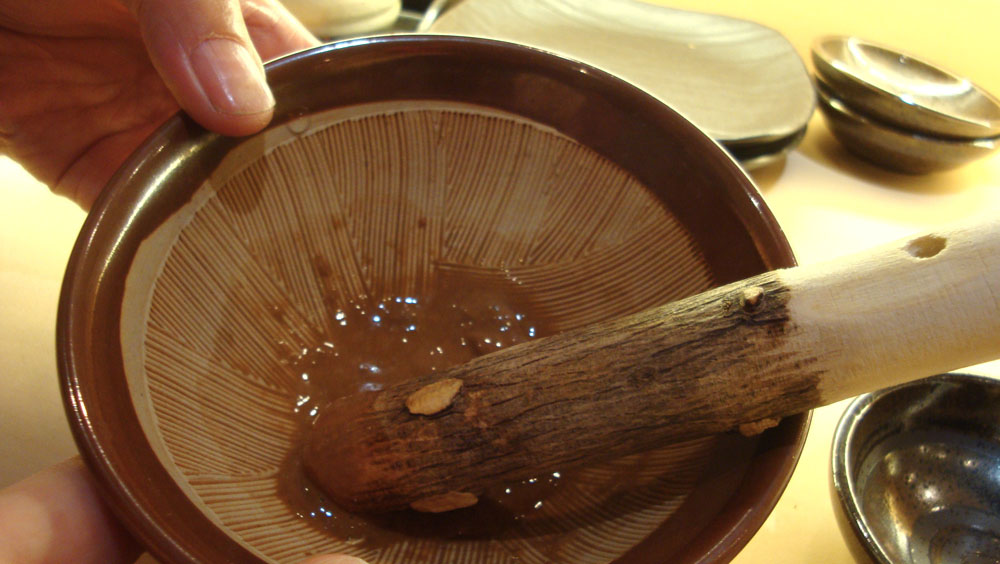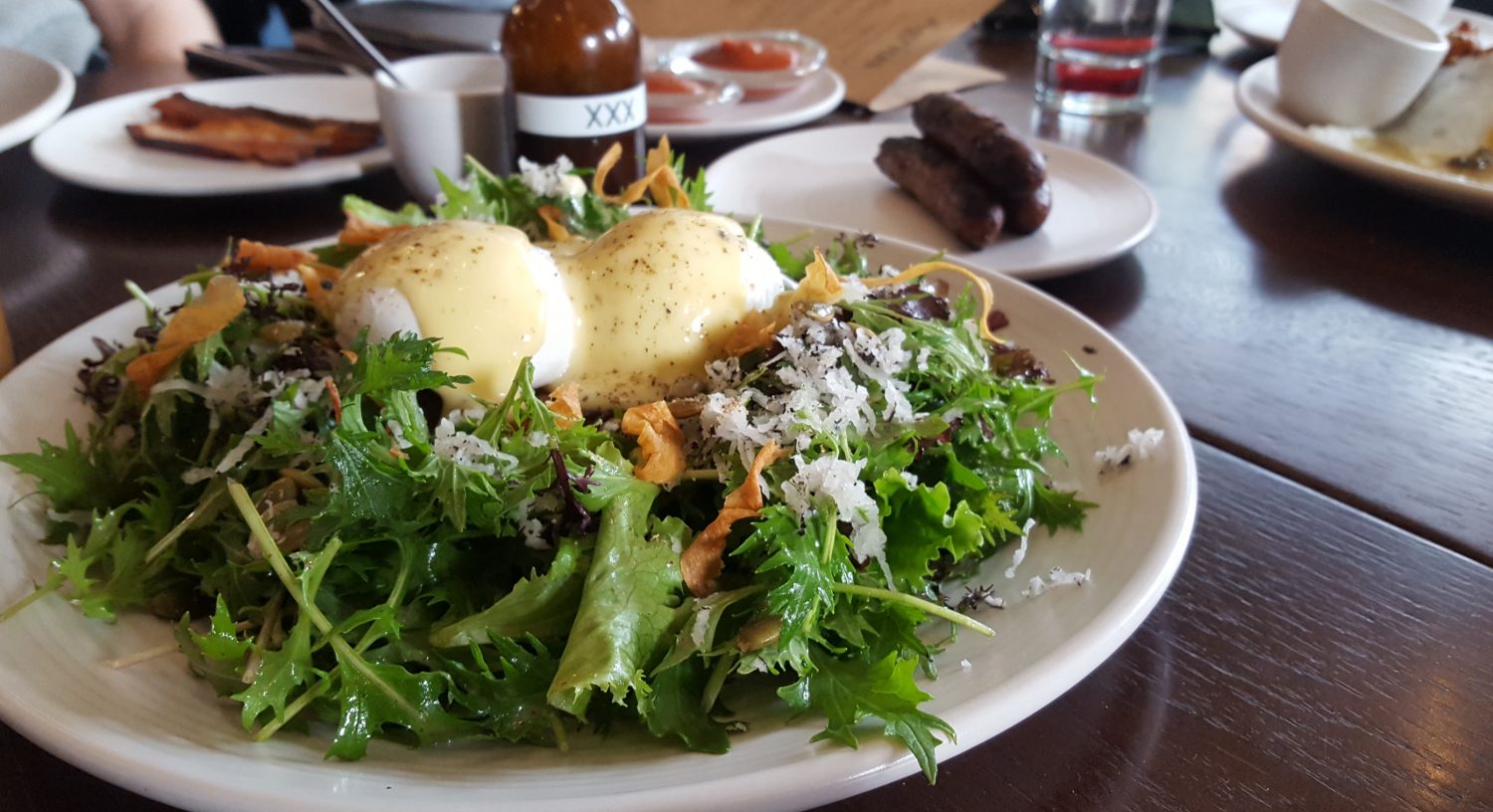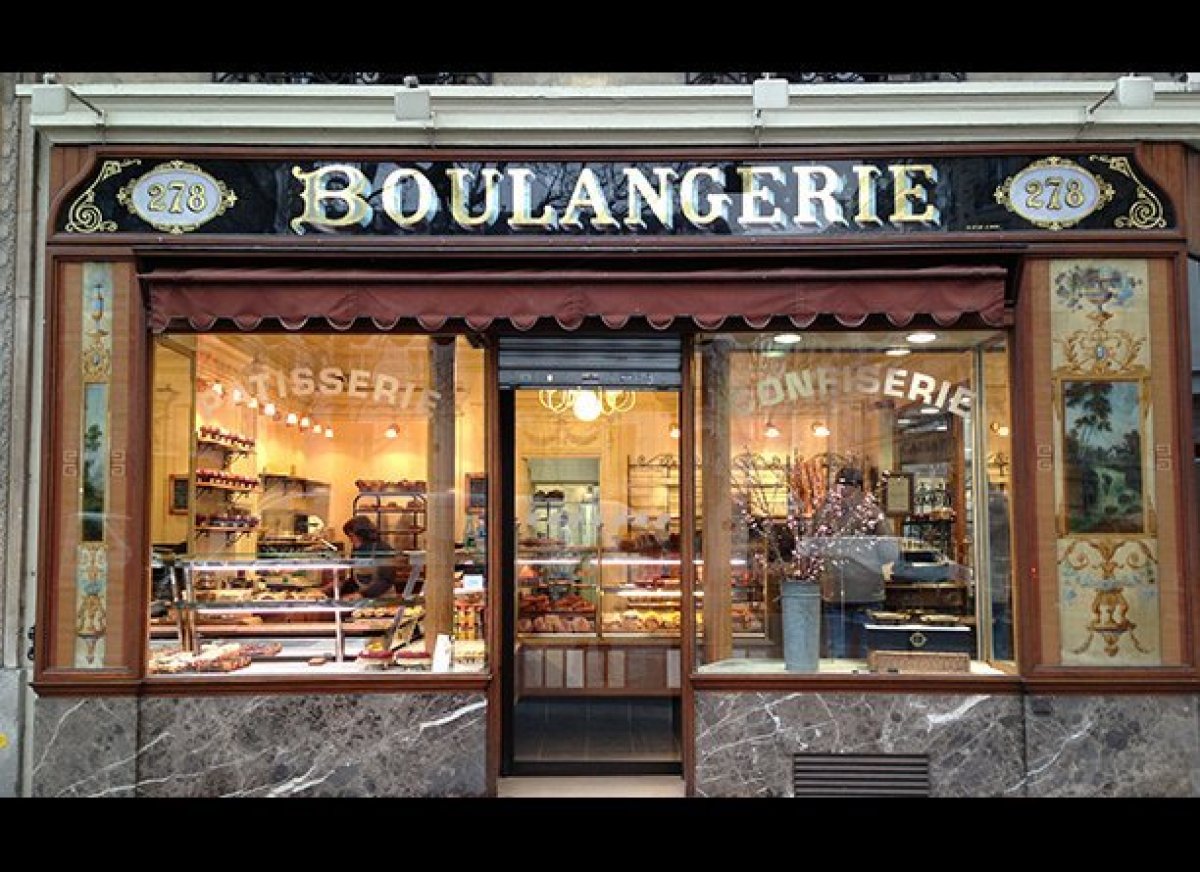Editors Note: This is a guest post from my dear friend Sarah whom I met during my Kansai Gaidai days. Looking for more adventure from her native UK, she’s teaching English in Japan at the moment in a suburb of Tokyo and eating her way through Japan. I definitely agree with her views of restaurant quality sushi in UK (my reference point being Vancouver, Canada) vs super market sushi in Japan. I remember eating at a cheap conveyor belt chain sushi named Kappa Sushi in Osaka regularly and it was above par of what I usually get in Canada at restaurants for a fraction of the price! Now… where can I find some live squid in San Francisco?
Clarifications:
- Izakaya – Japanese pubs with a focus on food. Cheap beer, small eats.
- Shochu – “working class” Japanese hard liquor
- Sashimi – slices of meat served raw
Living in Japan, a not infrequent question from the folks back home is if I eat much sushi and ‘What is it like?’.
I think we can all agree that sushi overseas and sushi on its home territory are very nearly two different dishes, not only in style but also in quality. What passes for restaurant-quality sushi in the UK is actually fairly easy to find in a supermarket here, and supermarket-quality sushi by UK standards thankfully isn’t really heard of here much. Even the cheapest Izakaya bars usually produce some kind of raw fish dish that is edible, even if it doesn’t have you hammering the table for more.
However, I could write all day about different types of sushi available here in Japan, but for the sake of brevity, I’m going to focus on sushi restaurants. These come in several broad varieties. First the intimidating abstract-calligraphy sort which may or may not be invite only and inevitably a stern looking older man behind the counter who eyeballs you as you enter. Here if find the deliciousness of the food is somewhat undermined by the prickly, snobby atmosphere- better to go as someone’s guest.
Next are the family friendly conveyer belt sushi shops; mass-produced, free toys and crayons and oddities like hamburger sushi. It’s a fast-food kind of atmosphere; good for gimmicky sushi on the cheap and a fun ambience but not really the place for tip-top sushi.
And lastly there are the mid-range sushi places; more affordable and friendlier than the elite ones, but more serious and artisanal than the cheap places. This is where I like to eat. You won’t find them in a guide book or on the main restaurant drag around the station. These places tend to be dotted around local neighbourhoods, small-owned and family-run, and worth running the gauntlet of a hand-written kanji menu to eat at.
I had lunch and dinner at Azasuke (鮮助), a single storey restaurant tucked away in north Omiya, Saitama. A little different with its live fish tank, I was drawn in by what seemed like a very promising lunch deal.
For 500-800 yen (about £3 $4USD) you could have a variety of chirashi-sushi bowls (scattered sushi) or a kai-sen seafood variety bowl, plus soup, salad, tea and pickles. These surprisingly also included pricey ingredients like ikura salmon roe and sea urchin, so it almost sounded too good to be true. I went for the kaisen-don pictured above, a bit worried that it would prove to be a disappointment.
Boy, was I wrong. The miso soup with seaweed was one of the nicest soups I’ve had in a long time and the wasabi greens made a nice perky pick-me-up between bites of rich, creamy fish.
The portion was generous, and the fish included not only the staples of salmon and tuna, but fatty tuna, what I think was sillago, prawn, flying-fish roe and one other fish.
I went back a couple of weeks later to check out the dinner menu, and, as it happened, to celebrate my birthday!
I sat at the counter this time, and was at once befriended by the Chinese lady on my right and the Japanese granny on my left.
Feeling adventurous, I ordered the squid sashimi special and enjoyed a rather good plum brandy while they fished my dinner out of the tank.
The squid was served in stages, with the tentacles first. These were doused in soy sauce to make them dance, and were tender and rather good.
Next I was provided with a pestle and mortar, the chef dropped in the squids… liver…(?) and I got an interesting lesson in how to season it and make a sauce. A cooking lesson with their dinner may not be everyone’s cup of tea, but I have to say, I enjoyed it.
Next up came the body of the squid, finely sliced into small pieces. I was instructed to start at the tail and work up, changing from a light soy sauce to the thick savoury sauce as I went.
Just when I thought I’d had an interesting dinner already, the chef suddenly turned up with some beautifully grilled prawns for me and the lady next to me. Apparently it was some special occasion for her too.
Mine were bent round as shown, to represent long life, or perhaps just that hopefully I wouldn’t drop dead soon, and the Chinese lady’s were cooked straight, to represent moving forwards in life.
I rounded off the evening with some deep-fried skate cheeks, which were delicious, and a glass of shochu. It wasn’t the cheapest dinner, with the Squid alone costing a shade under 3000 yen, but for a one time blow out, and for the quality of food received, I’d say it was worth it. You could easily have a cheaper dinner by not going for the tank specials, but then you’d miss out on the fun and the theatrics.

